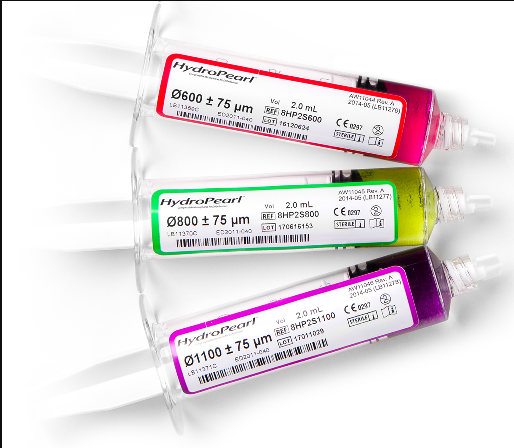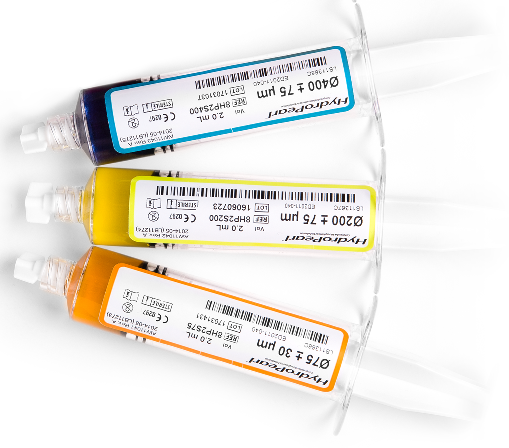• Vascular embolization is a high risk procedure. The procedure should be performed by physicians trained in vascular embolization procedures. Complications can occur at any time during or after the procedure.
• Do not use HydroPearl™ Microspheres in conjunction with other embolization devices based on organic solvents such as ethyl alcohol or dimethyl sulfoxide (DMSO), at the same embolization site.
• Use only non-ionic contrast agents in accordance with contrast agent labeling. Device compatibility with other contrast agents has not been established.
• Risks of radiation from angiography and fluoroscopy used to visualize the blood vessels during embolization, which may include a radiation burn and risks to future fertility.
• If arteriovenous anastomoses, branch vessels which lead away from the targeted embolization area, or emergent vessels not evident prior to embolization are present, it can lead to mistargeted embolization and cause severe complications for the patient.
• Microspheres smaller than 100 μm can migrate to distal anastomotic feeders and embolize circulation to distal tissue. For this reason, smaller microspheres have a greater likelihood of causing unwanted ischemic injury. This should be considered prior to starting the embolization procedure. Possible consequences include, but are not limited to, paralysis, necrosis, swelling, abscess formation and more severe post embolization syndrome.
• Ischemia of tissue adjacent to the targeted area may result from post-embolization swelling. Therefore, special care should be taken to avoid such ischemia of non-tolerant, non-targeted tissue such as the nervous system.
• Careful consideration should be given when using small microspheres contingent on the resolution of the imaging equipment used. The presence of arteriovenous anastomosis, branch vessel leading away from the target area or emergent vessels not evident prior to embolization can lead to mistargeted embolization and severe complications.
• Smaller microspheres may pose a greater ischemic risk and consideration must be given to the consequence of the injury prior to embolization.
• Consider upsizing HydroPearl Microspheres if angiographic appearance of embolization does not quickly appear during injection of the microspheres.
• If there are any symptoms of undesired embolization during injection, consider stopping the procedure to evaluate patient conditions and actions to be taken.
• HydroPearl Microspheres delivery time and amount. Typically, the artery will accept fewer HydroPearl Microspheres as the treatment progresses. Proximal slowing or termination of flow may indicate that the vessel or the target area is filled with HydroPearl Microspheres. Careful fluoroscopic monitoring is required.
• Microsphere embolization must be performed slowly. The injection speed and manner must be controlled. Excessive injection speed may result in retrograde material transport affecting other and healthy organs.
• Avoid reflux of HydroPearl Microspheres as this can induce immediate ischemia of the tissue or vessel.
• Carefully select microsphere size due to the tighter calibration of HydroPearl™ Microspheres, it has demonstrated the ability to penetrate deeper when compared to other cleared embolics.



